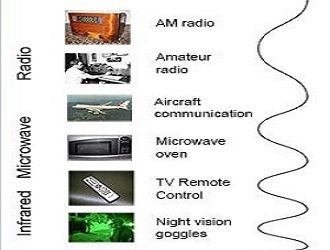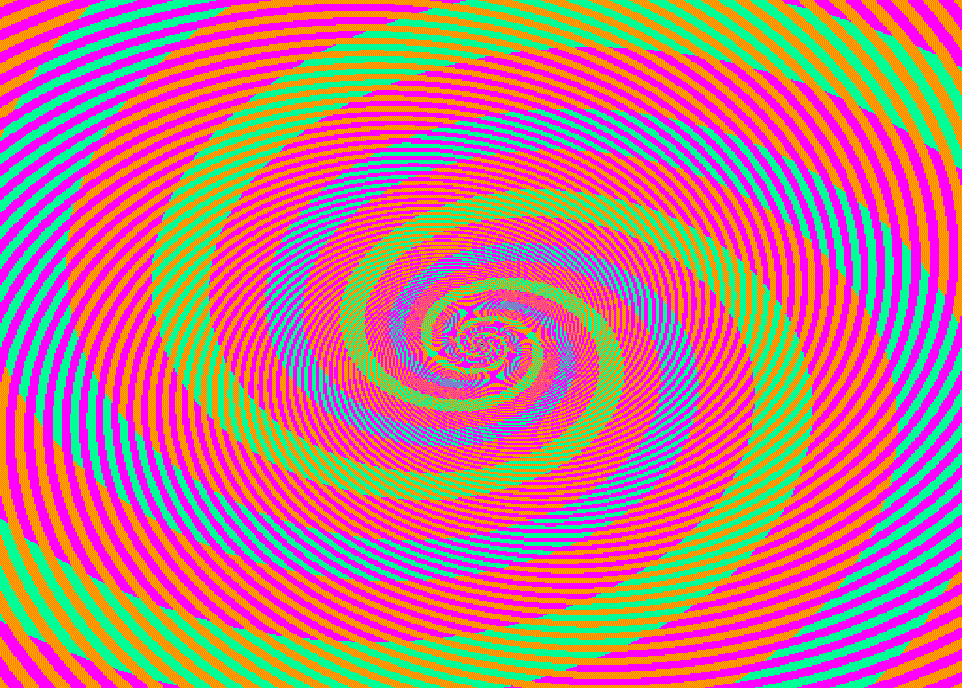Another entry on the "Today's lesson" series, this time we will talk about colors and their peculiarities

Were you aware that everything you see, every object, no matter how small or large, has no colors? And that those same colors are only perceive by us because our brain creates them?

Reality consists on infinite electromagnetic waves moving through space, but in the moment they reach the eyes, we perceive colors. Therefore, we can say the the concept of color itself is a creation from the brain, to help this person or animal interact with reality in a better way.
Electromagnetic waves are waves which can travel through the vacuum of outer space. Mechanical waves, unlike electromagnetic waves, require the presence of a material medium in order to transport their energy from one location to another. Sound waves are examples of mechanical waves while light waves are examples of electromagnetic waves. | Source

A real example of this phenomenon can be seen by people who suffer from chronic migraine effects, where the brain undergoes such a radical change during headaches that the areas of visual processing of this are so affected that they change the behavior of the neurons responsible for processing electromagnetic waves and convert them into colors, resulting in many of these people perceive different colors during such painful sessions.
We can ask ourselves if everyone perceive colors in the same way? We when say red are we actually referring to the same color?
Well, I think in most cases we are in fact, perceiving colors in the same way, given the fact our eyes are mostly identical thanks to having the same genetic pattern, although this does not remove the possibility that people who have certain anomalies in their genome or in their brain might be able to perceive colors in a totally different way to the rest of people.
I am sure you have at least read about cases of people that have Tetrachromacy , which consists on:
Tetrachromacy is an enhanced type of colour vision that may allow some women to see colours that others cannot. | Source
Tetrachromacy is a condition which allows people to see a palette 100 million colours | Source
This people perceive a much larger range of colors than normal people, at such a level that for a normal person two colors are identical for example 2 tones of blue, but for these people those 2 are totally different and are able to differentiate them every single time.

This is said to happen only in women, and it is estimated that about 3%(although the percentage varies according to different sources) of women have this capacity. This anomaly happens because these women have “four types of cone cells, instead of the regular three which underpin color vision in most humans” | Source . This might be another reason to argue about the fact we might still be evolving, even on a biological level.
It is also possible for people to see the same number of colors as others, but see them differently. That is to say, what for you is blue the other person sees it with another tone of color, but he/she still calls it blue, which is why it is difficult to know if someone sees "different" than the rest.
A curious fact is that some animals and even insects are capable of perceiving a larger share of the electromagnetic spectrum than us. The electromagnetic spectrum consists on "the range of all types of EM radiation. Radiation is energy that travels and spreads out as it goes – the visible light that comes from a lamp in your house and the radio waves that come from a radio station are two types of electromagnetic radiation. " | Source
The infrared light for example, is completely invisible for us humans. Nevertheless, most of the animals have a lower perception of colors than us, that's why there is the saying about dogs and cats having “black and white” vision, which is actually incorrect.
Below is the comparison of wavelength, frequency and energy for the electromagnetic spectrum.

Something peculiar about this subject is the fact that colors, just as sound, smell and taste, is a way for our brain to help us be better at handling all of the electromagnetic data that we receive thanks to our eyes. With sound instead of electromagnetic data we receive atoms being pushed, compressed and decompressed, and we are aware of them thanks to our ears.
This type of phenomena is what makes a bridge between psychology, science and philosophy, so think about the sense of touch, when get in contact with some soft objects, like our pillow for example, is this pillow something real or perhaps it’s the graphical manifestation of some mathematical illusion interpreted by our brain so we can interact with reality?
Conclusion
Reality is not always what is seems to be, and sometimes I think about the brain as a tool used by living beings in order to be able to rudimentary interact with the mathematical equations that rule our existence.
Nevertheless, the brain is an imperfect tool, and that’s why we amaze ourselves from time to time using optical illusions that make us question our own capacity to interpret things as they truly are. For example, this image:

In this image we can clearly see a blue color and a green color (among others), but the truth is the "blue" and the "green" even though they look like different colors, are actually the same. There is no difference between them. If you don’t believe me, open your photoshop, and check the RGB value of each of them. Crazy isn’t it?
What do you think about "Today's lesson"? Were are you able to learn something?
Feel free to share your opinion and participate in the discussion
References
Image sources
1 , 2 , 3 , 4 , 5

If these titles sound interesting to you, I assure you the articles will be even better!

"A day in the future": Using our body's kinetic energy to power a micro GPS
Sometimes the best thing is to say "No"
Do you have a clone somewhere in the universe?
Reflections about acting towards our goals
Thinking positively makes us feel better
Do you have a clone somewhere in the universe? Part 2
